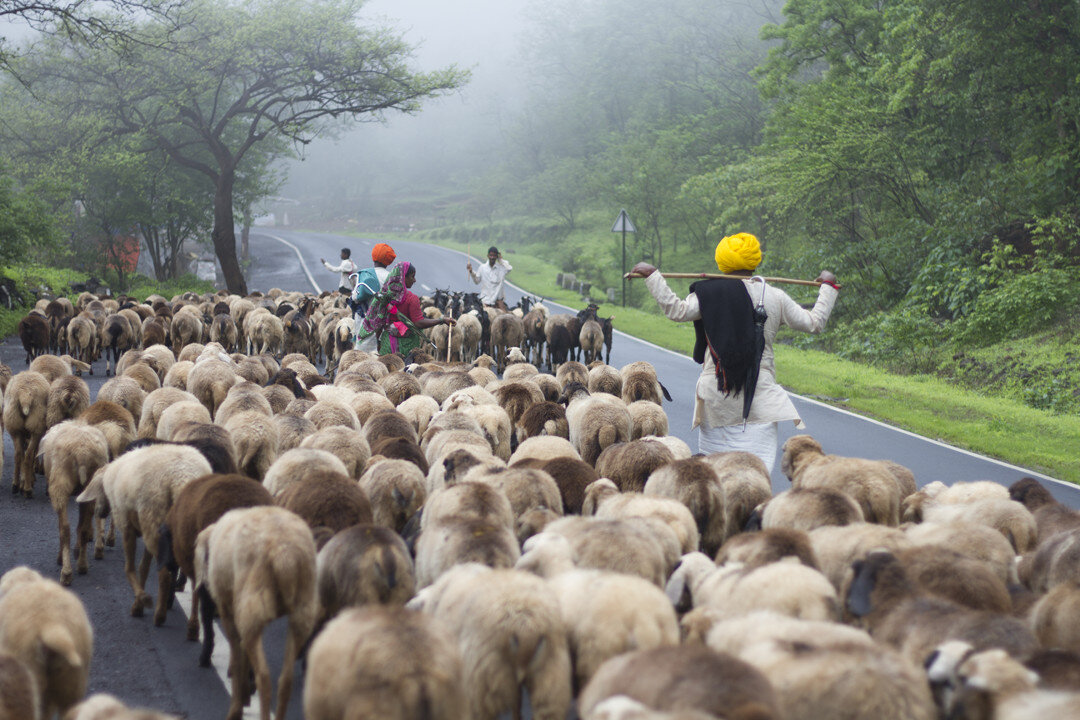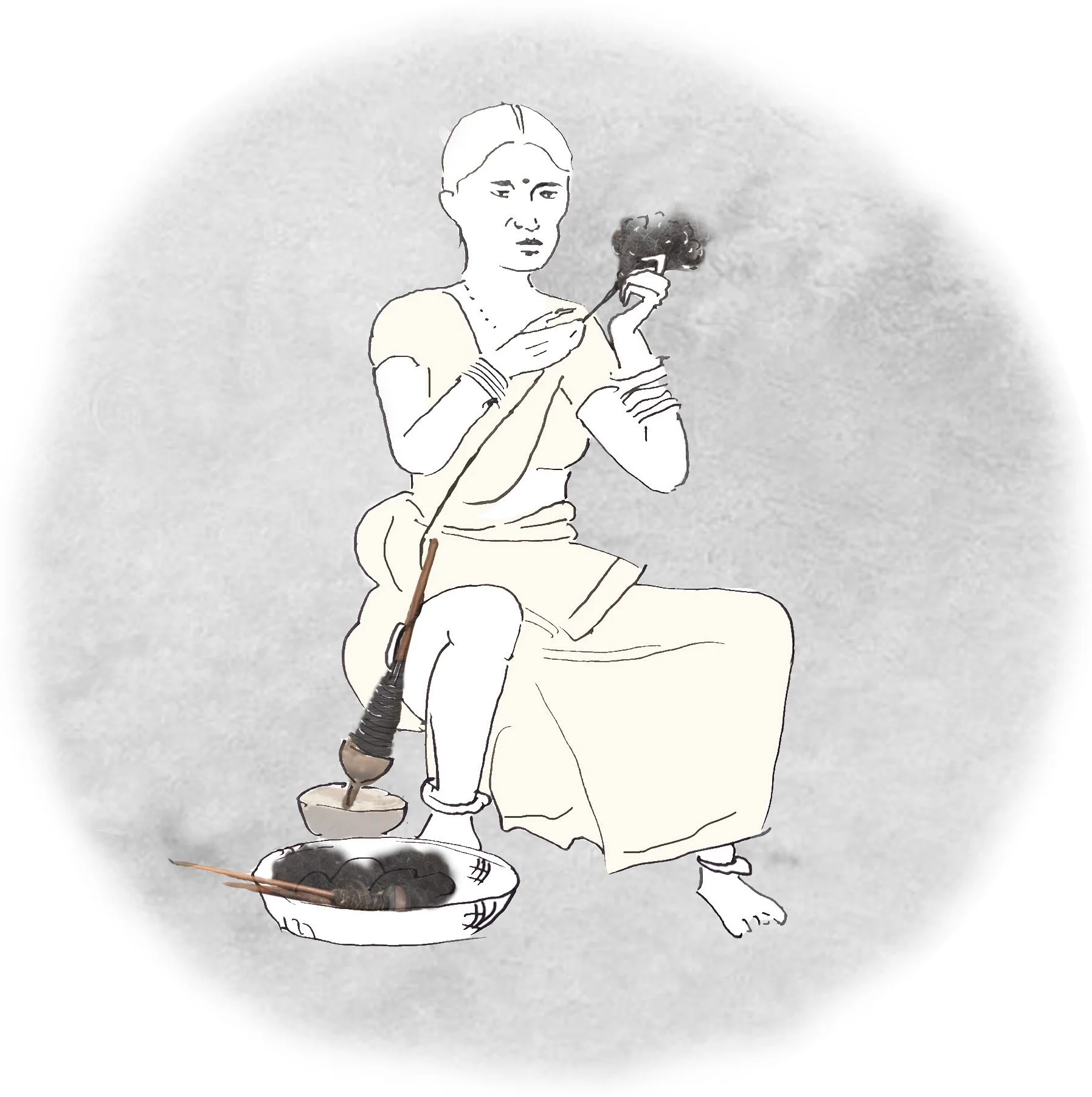Wool from the Deccan Plateau of India
A herd in Malshej Ghat, Maharashtra. Image by Nipun Prabhakar for Living Lightly.
“Herding sheep is our dharma rather than a mere occupation, entrusted upon us by the divine.”
Image: Balu Mama’s flock of Deccani Sheep. Image by Nipun Prabhakar for Living Lightly.
Shepherds across Maharashtra, Karnataka, Telangana and Andhra Pradesh have, for centuries, shared an intimate relationship with their traditional Deccani sheep, its wool, manure and meat. Predominant amongst shepherd communities of the deccan, the Dhangars, Kurubas, and Kurumas — all children of the same god — are held together by their black Deccani sheep and stories of their origin.
Image: A Deccani herd walks to the Western Ghats fertilizing fields as they move. Image by Nipun Prabhakar for Living Lightly
The small and hardy deccani sheep are adept at making the long, thirst-filled, post-monsoon voyages to the Krishna or Godavari river basins while some others of their ilk make it to the western ghats. They ruminate and fertilise vast tracts of lands as they move; and even today, farmers along the pastoral tracks, await their annual arrival.
The Deccani shepherds begin their tryst with sheep and wool very early!
“On the third day of a baby being born, we have a ritual called Purudu. We place our wool in the cradle and cover it with a white fabric. The baby is laid on top of it. If a baby boy, we surround him with tools used for shearing and little baskets of wool. If a baby girl, we place our carding and spinning tools beside her. And their life as a shepherd begins!”
Image: The shepherd and the priest.
Integral to the lives of the sheep pastoralists and communities in their ecosystem is the Gongadi, an iconic blanket, handspun and woven from the black wool of the indigenous Deccani sheep. It is the woolly prism through which one understands the life-world of the decani shepherds. The Gongadis are a unique mix of the everyday and the unique ~ shepherds carry the black Gongadi on their right shoulder, priests carry it on their right, and the deities reside within its folds ~ each made distinct by the patterns of the Kada (hand woven border) and the Suncha (tassels).
Many pastoral women still spin wool on their thighs. Illustration by Sandeep Virmani.
Image: A Nadaf couple felts wool in Bidal, Maharashtra. Image by Nipun Prabhakar for Living Lightly
In southern Karnataka, the rich coarse wool has traditionally inspired an exquisite three dimensional prayer flag called the ‘Jhanda’, intricately woven with a double shaft. And throughout this sheep terrain, the art of felting wool continues to thrive in specialized villages of Maharashtra, Karnataka, Andhra Pradesh and Telangana, amongst special felting communities.
While the deccani sheep wool continues to remain the sacred fibre which blesses the communities through all their life cycle rituals, the famed deccani sheep, its wool and the shepherd are all in decline. The fading flocks of the deccani are losing value to the more meaty sheep breeds, and its wool culture waits to be nourished once again.
Sheep of different coats indicating mixed breed profiles. Photos by Nipun Prabhakar for Living Lightly.







